Dealing with barn swallows nesting on your property? These persistent birds can cause significant problems with their droppings, nesting materials, and noise. While barn swallows help control insects, they can create fire hazards, contaminate air ducts, and damage property surfaces with their acidic droppings. This comprehensive guide provides proven methods to permanently how to get rid of swallows and permanently keep them away from your property.
Quick Picks: Best Barn Swallow Control Products
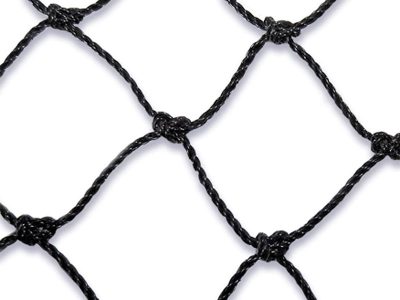
Most Effective
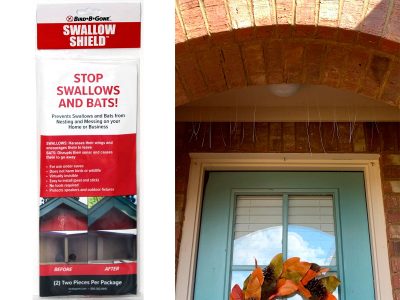
Easy Installation
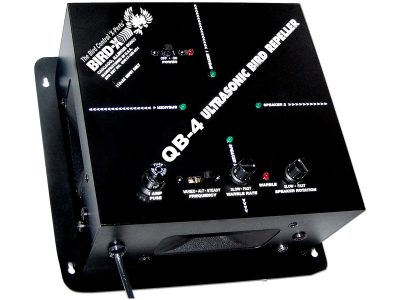
Sound Deterrent
Understanding Barn Swallows: Know Your Opponent
Before implementing permanent control solutions, it’s important to understand barn swallow behavior, nesting habits, and why they’ve chosen your property. This knowledge will help you implement the most effective deterrent strategies.
Barn Swallow Identification
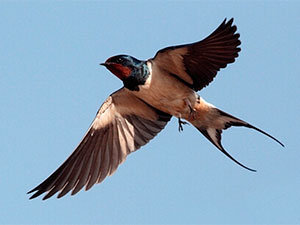
- Appearance: Barn swallows have distinctive forked tails, streamlined bodies, and pointed wings. They typically measure 5-7 inches in length with a 12-15 inch wingspan.
- Coloration: These birds display glossy blue-black upper parts contrasted with rusty-colored throats and pale buff or cinnamon undersides.
- Flight Pattern: Barn swallows are extremely agile flyers, swooping and gliding to catch insects in mid-air.
- Nesting: They build distinctive cup-shaped nests made from mud pellets reinforced with grass and lined with feathers or soft materials.
Why Barn Swallows Choose Your Property
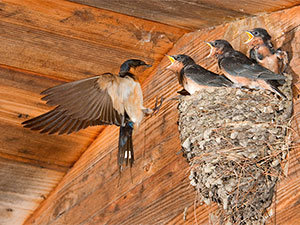
Barn swallows select nesting sites based on specific criteria that make your property attractive to them:
- Sheltered locations with horizontal surfaces underneath like eaves, porches, and rafters
- Proximity to water for both drinking and collecting mud for nest building
- Open areas nearby for foraging insects
- Previous nesting success – swallows return to successful nesting sites year after year
- Building materials – easy access to mud, grass, and other nesting materials
Health and Property Risks
While barn swallows provide the benefit of insect control, they create several significant problems when nesting on residential or commercial structures:
Disease Transmission
Barn swallow droppings can harbor pathogens including histoplasmosis, salmonella, encephalitis, toxoplasmosis, and Cryptococcus.
Fire Hazards
Nesting materials in vents, chimneys, and electrical fixtures create fire risks when they block airflow or contact heat sources.
Property Damage
Acidic droppings deteriorate building materials, stain surfaces, and damage paint and finishes.
Noise Disturbance
Colonies create significant noise, particularly at dawn and during nesting season.
How to Get Rid of Swallows Permanently: 4-Step Strategy That Works
To effectively resolve barn swallow problems long-term, follow this comprehensive 5-step approach that addresses both immediate issues and prevents future nesting.
Step 1: Timing Your Control Efforts
Successful barn swallow control depends heavily on proper timing:
- Late Fall to Early Spring: The ideal time to implement physical barriers and deterrents is after swallows have migrated and before they return in spring.
- Early Detection: Monitor your property closely in early spring to catch the first signs of swallow activity before nesting begins.
- Immediate Response: When swallows first appear, implement deterrents immediately. Once nest building begins, you have a very narrow window to act.
Step 2: Remove Existing Nests (When Legal)
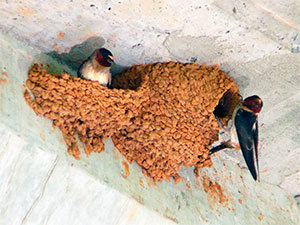
Proper removal of old, unoccupied nests is crucial in preventing swallows from returning to the same location:
- Ensure nests are completely empty with no eggs or chicks present
- Wear protective gear including gloves, mask, and eye protection
- Use a scraper and putty knife to completely remove the nest and residue
- Clean the area thoroughly with a disinfectant solution
- Seal the area with paint or surface sealer to remove pheromone traces
Step 3: Install Physical Barriers
Physical barriers are the most effective long-term deterrent for preventing barn swallow nesting:
Bird-X Heavy Duty Bird Netting
Most EffectiveHow Does It Work
How to Use
- Measure and cut netting to completely cover vulnerable areas with a few inches of overlap
- Secure edges with net clips, staples, or other appropriate fasteners
- Ensure the netting is taut with no gaps swallows can exploit
- Install at a slight angle to prevent birds from landing on the netting itself
- 100% effective when properly installed
- Long-lasting solution (5+ years of outdoor use)
- Nearly invisible when properly mounted
- Humane method that simply blocks access
- Works immediately with no adjustment period
- More labor-intensive to install than other methods
- Requires proper installation to be effective
- May be visually noticeable on some architectural styles
- Requires maintenance to check for and repair any damage
Bird-B-Gone Swallow Shield
Easy InstallationHow Does It Work
How to Use
- Clean the mounting surface thoroughly
- Measure and cut the Swallow Shield to fit the area
- Remove the adhesive backing and press firmly onto the surface
- Ensure strips hang freely with slight spacing between them
- For permanent installation, use additional mechanical fasteners through provided holes
- Quick and easy installation
- Low visual impact compared to solid barriers
- Effective specifically against swallows
- No maintenance required
- Can be installed with adhesive only for temporary applications
- Less durable than netting over multiple seasons
- Adhesive may fail in extreme weather conditions
- Less effective for large open areas than netting
- May require additional mechanical fastening for permanent installation
Additional Physical Barrier Options
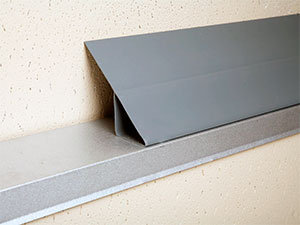
Bird Slope Sections
- Creates a 45° slippery surface birds cannot land on
- Perfect for ledges and horizontal surfaces
- Permanent, maintenance-free solution
- Virtually invisible from ground level
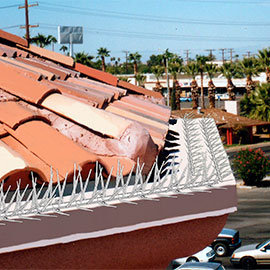
Anti-Roosting Spikes
- Prevents landing on narrow surfaces
- Stainless steel construction for durability
- Easy installation with adhesive or screws
- Perfect for ledges, beams, and gutters

Wire Tension Systems
- Nearly invisible barrier system
- Ideal for architectural preservation
- Customizable for any surface
- Professional installation recommended
Step 4: Deploy Sensory Deterrents
While physical barriers provide the most reliable protection, sensory deterrents can enhance your control strategy by making your property less appealing:
Bird-X Quadblaster QB4 Ultrasonic Repeller
Sound DeterrentHow Does It Work
How to Use
- Mount the unit at the height of potential nesting areas
- Position to cover the specific area requiring protection
- Connect to a standard power outlet (outdoor-rated extension cords may be necessary)
- Program the frequency range specifically for swallows
- For best results, install before swallows arrive for the season
- Silent to humans while effective against birds
- Covers up to 6,500 square feet
- Can be used in semi-enclosed spaces
- Requires no physical barriers affecting appearance
- Low maintenance once installed
- Requires electricity to operate
- Less effective than physical barriers for determined birds
- Best used as a supplementary deterrent rather than primary solution
- May have reduced effectiveness in open outdoor areas
Visual Deterrents
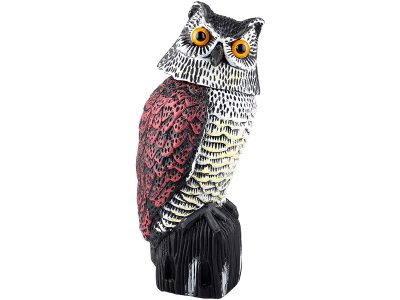
Visual deterrents can provide an additional layer of protection, especially when combined with other methods:
- Predator Decoys: Realistic owl, hawk, or falcon decoys can temporarily deter swallows, but must be moved regularly to remain effective.
- Reflective Objects: Flash tape, reflective pinwheels, or hanging CDs create unpredictable light patterns that swallows find distressing.
- Electronic Visual Deterrents: Products like the Bird Blazer use random laser patterns to disorient birds and make areas seem unsafe.
Chemical Repellents
Bird repellent gels and liquids create uncomfortable surfaces that discourage landing and nesting:

Bird-B-Gone AAFS Fogging System
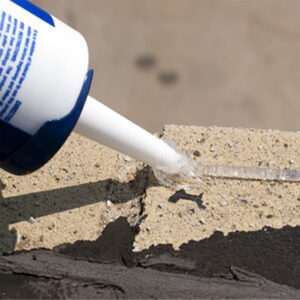
Bird Repellent Gel on Ledge
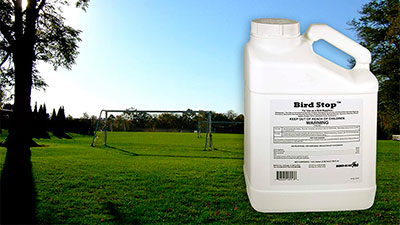
Liquid Repellent Application
Step 5: Habitat Modification for Long-Term Prevention
For permanent protection against barn swallows, consider these habitat modifications that make your property less appealing:
- Reduce Insect Populations: Minimize standing water, use insect control methods, and keep outdoor lights off when possible to reduce the insect food supply.
- Remove Access to Nesting Materials: Limit access to mud sources by draining puddles and wet areas where swallows gather materials.
- Modify Architecture: When renovating, consider designing eaves and overhangs with angles greater than 45° to discourage nesting.
- Install Alternative Nesting Structures: Place swallow nesting boxes away from your buildings to redirect nesting to more acceptable locations.
- Regular Monitoring: Implement a consistent monitoring schedule to catch any new nesting attempts early.
Professional Tips for Permanent Swallow Control
- Install all deterrents at least 2-3 weeks before the typical arrival of swallows in your area
- Use multiple deterrent types simultaneously for maximum effectiveness
- Clean and disinfect previous nesting sites thoroughly to remove pheromone traces
- Check physical barriers annually for damage and repair as needed
- If swallows persist despite deterrents, consider consulting a professional bird control specialist
Frequently Asked Questions
Are barn swallows protected by law?
Yes, barn swallows are protected under the Federal Migratory Bird Treaty Act. This law makes it illegal to kill barn swallows or remove active nests containing eggs or young birds. Violations can result in fines up to $15,000 and potential imprisonment.
You may implement deterrents and remove old, inactive nests during the non-breeding season, but once eggs are laid, the nest cannot legally be disturbed until after the young have fledged and the nest is abandoned.
When is the best time to implement barn swallow control?
The ideal time to implement barn swallow control measures is during the off-season when swallows have migrated south. In most of North America, this means installing deterrents between late fall and early spring before swallows return to nest.
If you notice swallows beginning to build nests, you have a very narrow window (usually 1-2 days) to discourage them before eggs are laid. Once eggs appear in the nest, you must wait until the young have fledged before removing the nest or installing deterrents in that specific location.
Do ultrasonic bird repellers actually work against barn swallows?
Ultrasonic repellers can be effective as part of a comprehensive control strategy, but they rarely provide complete protection when used alone. Their effectiveness varies based on installation location, coverage area, and the persistence of the swallows.
For best results, ultrasonic devices should be installed before swallows arrive for the season and used in combination with physical barriers. Over time, swallows may become habituated to the sounds, so using variable frequency devices provides better long-term results.
How do I know if barn swallows are beneficial or harmful to my property?
Barn swallows offer both benefits and potential problems. On the positive side, they consume large quantities of flying insects, with a single swallow eating up to 850 insects daily, providing natural pest control. This can help reduce mosquitoes and agricultural pests around your property.
However, their nesting habits can create significant problems including structural damage from acidic droppings, health risks from disease-carrying droppings, noise disturbances, and blocked vents or chimneys creating fire hazards. Most property owners find that the problems outweigh the benefits when nests are on occupied buildings.
What home remedies effectively deter barn swallows?
While professional products offer the most reliable protection, several DIY methods can help deter barn swallows:
- Installing monofilament fishing line strung vertically every 3-4 inches in front of nesting areas
- Hanging reflective objects like old CDs, aluminum foil strips, or mylar tape near potential nesting sites
- Creating slippery surfaces with silicone or Teflon spray on potential nesting ledges
- Playing recordings of predator calls or distress calls (though effectiveness diminishes over time)
- Installing angled boards (at least 45°) under eaves where swallows attempt to nest
For best results, implement these methods before nesting begins and use multiple approaches simultaneously.
Conclusion: Achieving Permanent Barn Swallow Control
Successfully controlling barn swallows requires a proactive, multi-faceted approach implemented at the right time. By understanding swallow behavior, installing effective physical barriers, and enhancing protection with sensory deterrents, you can permanently reclaim your property from these persistent birds.
Remember that timing is critical—all control measures should be in place before swallows return in spring. Once nesting begins, your options become legally limited until the nesting cycle completes.
With proper implementation of the techniques outlined in this guide, you can achieve long-term, humane control of barn swallows while complying with wildlife protection laws. The investment in proper deterrents now will save you from dealing with the mess, noise, and health concerns associated with barn swallow infestations for years to come. Additionally, it is essential to remain vigilant and proactive in monitoring your environment to prevent future nesting. If you’re facing challenges with other avian pests, such as how to deter turkey buzzards, there are specific strategies that can be employed alongside those used for barn swallows. By creating an unwelcoming atmosphere for these larger birds, you can safeguard your property and minimize potential disruptions.
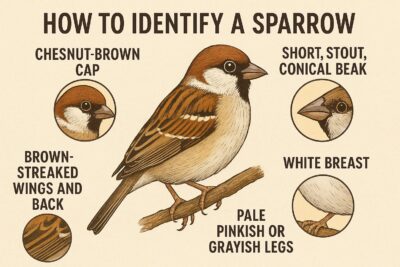

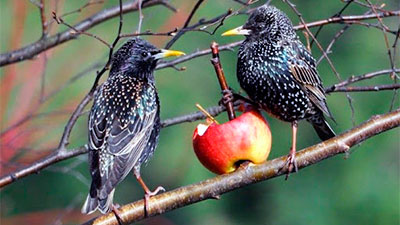

We have lived here for 16 years and never had a problem in our 3 stall horse barn and tonight we have a small bird, possibly a barn swallow, flying around the barn and it refuses to leave. We keep the barn door wide open all the time, but it chooses to stay inside. We don’t want the bird poop in the barn and possible disease exposure to us or the horses. Please post if anyone knows anything that will work to get rid of the bird. We are going to check it out more thoroughly in the morning to see if there is a nest. If there is a nest how long before the babies leave? And can I then get rid of the nest? And will the swallow still keep returning? We want our barn back, this thing is flying around like crazy and scaring the horses, a good way to have an accident. Help!
We have a nest on our porch on top of the shutter. The eggs have hatched we see the babies sitting on the edge. How long before they fly away?
My husband loves to watch the swallows and their interesting life they live. BUT we have a carport that is 16 feet high and they build their nest every year there where we can’t bother them. We are 80 years old and we don’t need all this poop all over our car and carport and also we can’t climb any ladders a this age to clean up the empty next. We don’t need the exposure to disease and I am beginning to hate the birds. They just have to go, the gang left the next the other day while we were not here and since then a gang of them keep looking everywhere under our carport to find them. I am calling a professional tomorrow, we have no choice. They are PESTS!
WE purchased a large home with a wrap around porch last year. The house had no less than 20 barn swallow nests built on it. First I power washed the exterior to rid all the nest. This spring when the birds started arriving I did 2 things. First I put roach glue pads down in the corner ledges where they started roosting at night. Secondly I poured a stream of ” Lemon scented Joy” dishwashing soap all along the ledge. Problem solved.
I love my barn birds but they are taking over my wrap around porch. I started with two nest one on the front and one in the back. I know have 7 that range from the porch to over windows and house vents! I have small grandchildren who love to go barefoot I can’t keep up all the poop so I have to do something. I’m going to wait till all birds are hatched and then I will begin tearing down nests and cleaning hoping this will deter them!!
For those of you who think that people suggesting ways to deter barn owls from nesting in specific areas, I would like you to consider that some of these situations are in fact dangerous for the barn owls themselves. We live in a condominium in the middle of downtown. They are trying to build Nest around electrical components. This is dangerous for them and for the people that live in the Condominiums. Not to mention the fact that they are pooping all over my front door and patio so I cannot even walk into my condominium anymore without tracking stuff in unless I am cleaning it daily.
The best place for wild animals is to be in the wild, not next to electrical wiring.
Several years ago I read in a bird magazine to run a bead of Lemon Joy dish detergent on the surface you want to protect. It seemed silly, but I did it and it worked. Sometimes I have used a spray bottle with diluted Lemon Joy, also, when the surface is hard to reach. They don’t like it! I have also used store brands of lemon-scented detergent. It’s a simple fix. Try it. I used the concentrated version! I don’t know if it is because it is sticky, or the smell!
Anthony, I would prefer to live with them as I think they beautiful and it seems most of us are looking for a way that will cause them to move on and not come back, not kill them. We also have a vast population of Purple Martins which also eat 1,000s of mosquitos a day. My problem is is that they are really aggressive when they have chicks and I need to take my trash and recyclables out to my dumpster. It’s only a few steps off my porch but they have come to know the sound of my door opening (like Pavlov’s dog) and begin swooping me. Currently, I won’t even let my grandkids take out the trash or recyclables because I don’t want them have a fear of birds later.
Also, the older folks who have a problem with them in their barn IS a problem especially if the birds hit them on their head or body as they are being swooped. It could cause them to fall and hurt themselves further. Are they to be denied the ability to care for their other animals for fear of getting hurt? Is that being human-centric? Is having to live with their diseased poop on our porches and barns being selfish?
I think we would love to all live in harmony. Maybe you can teach the birds how to do that.
In the last 4 days, they have become a huge pain in my BUTT. They are trying to build a nest on top of our front door camera and I have hoed it down twice now and they are not happy. I woke up this am to massive amounts of poop all over my door and house. They have to go!!!!!
I had a horrible problem on our newly built home on our porch. I sprayed WD-40 in each corner. For the last three years, I respray before the 1st of May and it’s worked so far at keeping them at bay. They are absolutely mean little bombers but I don’t want anyone getting pecked by them. I swear by WD-40 and hope it works for others. The critters hate the smell and off they go!
I heard they don’t like smells
We are going to pressure wash again tomorrow and then spray the house eves with vinegar.
Kathy & Anthony need to become realistic, .As if COVID-19 isn’t bad enough, they are a health hazard around humans. Especially to my grandkids and me and my asthma. If they won’t stay away here they’re gonna be Worm bait
Has anyone tried the liquid repellant? I have ordered it but thought I would ask. I look forward to spring and I love the birds in my yard. I love their songs and just watching them in general. What i don’t like is barn swallows dive bombing my family as we sit on our porch. They only started doing that in the last 2 years. I don’t know what changed. I will let you k ow if tbe repellent I bought works. Last year I used strip foil on my door and had no birds but this year it didn’t work.
Exclusion is the only option – and potentially building a nest location nearby with an overhang to discourage them.
I grew up on a farm and there were barn swallows around all the time, but they didn’t nest on the house. They are a big nuisance on a porch or near a door. I would prefer not to kill them as they do eat lots of unwanted insects, but I’ve not found a practical way to discourage them from unwanted areas.
Histoplasmosis is a VERY dangerous disease coming from their droppings. I spent 30 years in a large refinery where we had a high concern of this disease from pigeon droppings. The pigeons roosted, nested and raised in our tank and tower structure where our workers were at risk. Don’t know about horses and their exposure from the droppings, if they were my horses and I really cared for them the decision here which would go and which would stay would be real easy.
Kathy and rob Lao those who love swallows should have seen the thousands in damages they caused to our new home. Not only did they pry open the 2nd floor exterior vents connected to the bathrooms but they died inside same ductwork and the smell was leaching through from our struck with R45 blown in Insulation but I had to rip out all the ductwork to get rid of these disgusting birds that crap EVERYWHERE. now in apartment complex with Open stairwells and they are building on top of the fire sprinkler heads completely blocking them off. I wouldn’t kill these birds but I will keep removing their nest till they get the pint we are sick if their shit all over our steps, doors, and walls
We tried the hawk decoys which seemed to work for about a week. And yes I did move them every day or every other day.
Kathy – While they may eat mosquitoes they are a nuisance when they insist on building their nest above our front door.
Anyone tried the netting?
I’m sorry Kathy but they cause damage. We don’t live on a farm we live in a townhome and they are on our porch dive bombing the kids and not to mention the amount of bird poop all over my chairs.
They are better ways to get rid of mosquitos than these birds. I am tired of my front porch and lighting being covered in their poop. It is nasty and full of disease. I spray them with a water hose daily and wash away their nest. Disgusting birds.
Oh your poor bleeding heart! If you care so much about swallows, then YOU should put up swallow nests and feed them and make them welcome on your property! I bet you care less about human life than swallows. Hippy!
Barn swallows keep returning to my front porch. I agree that swallows are beautiful and beneficial. But….just going out my front door results in a highly itchy rash with bright red skin and bumps from their bird mites…I also have to put paper down to catch the droppings which I change daily wearing gloves. I don’t want my guests and delivery people to get mites or any other diseases from the exposure. I’m planning to build a nest box near by and employing further measures to discourage them from nesting on my porch after carefully removing the nest, now that the babies are out. Right now I’ve hung a basket of peppermint and lavender under where the nest is. But it has to go.
A depressing article in every way: selfish, human-centric, eco-ignorant. It is shocking that this article was posted only recently; to depict swallows as flying rats. Please remember, we share this planet with other species, especially beneficial species like the swallow. Their numbers are falling year-on-year because of the selfishness of humankind. They should instead be encouraged – even celebrated.
OK, a nest over a porch is an understandable problem. But surely we can learn to co-exist? For many, it is always a joy when they return home in the Spring.
It’s apparent that Mr Cummins has not been inconvenienced by these nuisance species. I can’t even enjoy my porch without them swooping and dive bombing my family . They need to change the law to allow us to rid our properties of them..
And about how much shit and debris they leave behind! I want them out of my barn and am setting it up so the barn cats can accomplish that.
I am heartbroken to come across this information and posts. Swallows are a hugely beneficial bird! They EAT MOSQUITOS for starters. “These twittery, flittery birds love to eat the insects that humans consider pesky.
Imagine: 60 insects per hour, a whopping 850 per day. That’s how much each bird eats” 25 years sharing our barn in the spring time with swallows and our health and horses health are just fine. Go figure.
I agree with you 100% Have you found anything that works to keep the birds out of your horse barn? We have 10 stalls and it is impossible to keep the stall doors closed all of the time
Do laser beams work on the inside of the barn”
We have used the streamers , the predator calls, owl decoys, and are now knocking down nests twice daily. We took down 11 this AM. Our horse barn is 40 x40 feet and we cannot leave it closed because we have horses. I am sorry but none of the above works. We are in our 80’s and do not think these birds are wonderful.